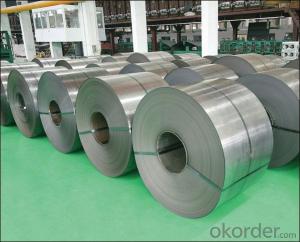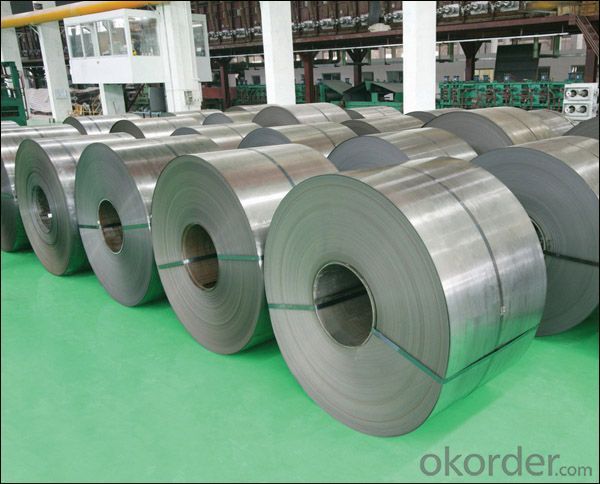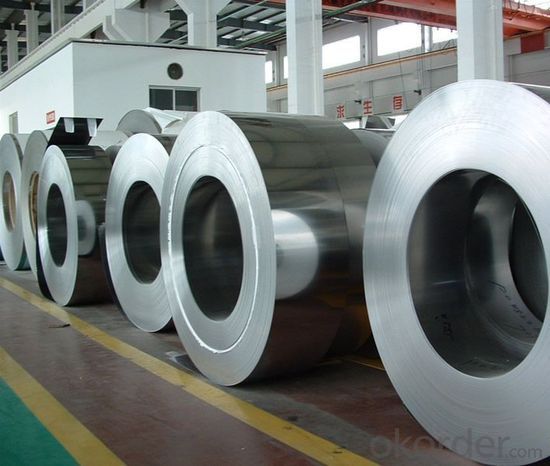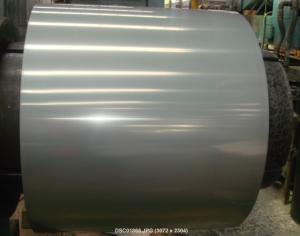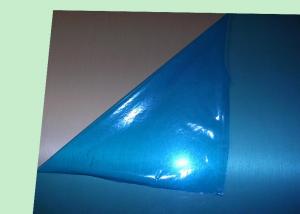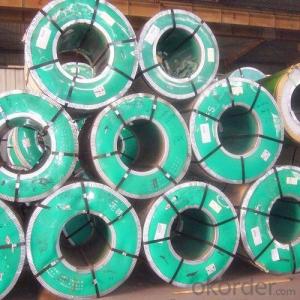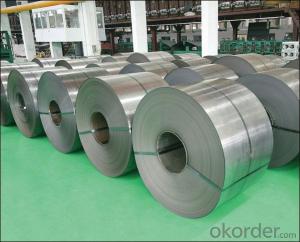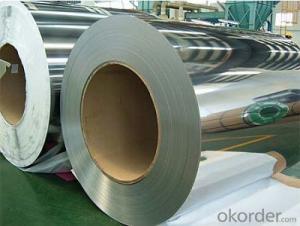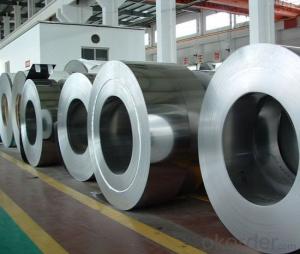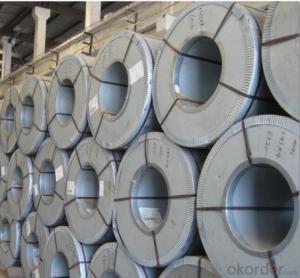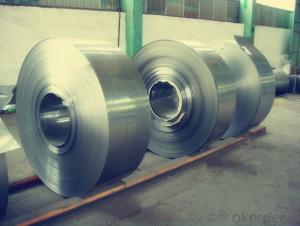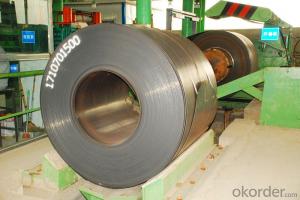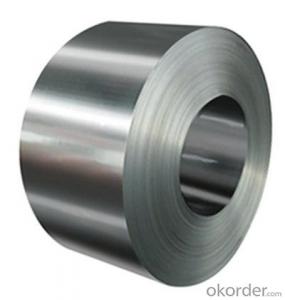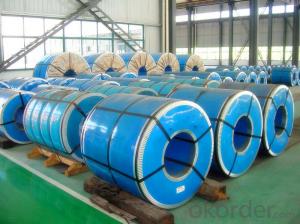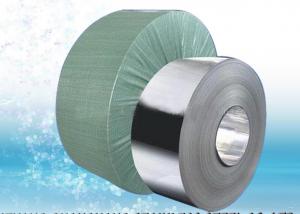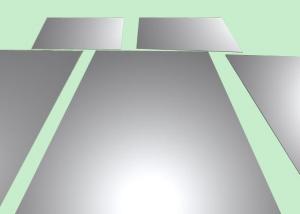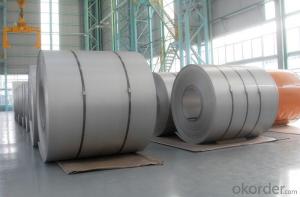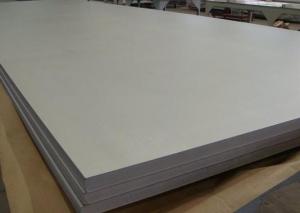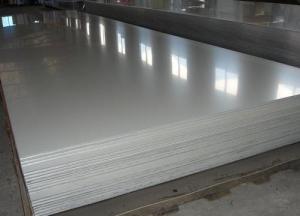Stainless Steel Coil 201 Cold Rolled Hot Rolled Coil Narrow Coil
- Loading Port:
- Lianyungang
- Payment Terms:
- TT OR LC
- Min Order Qty:
- 400 m.t.
- Supply Capability:
- 5000 m.t./month
OKorder Service Pledge
OKorder Financial Service
You Might Also Like
Hot Rolled Stainless Steel Coil 201 Narrow Strip No.1 Finish
Packaging Detail: For customer's requirement
Delivery Detail: 10-30days
201 Hot Rolled Stainless Steel Coil Specifications
THK:2.3/2.5/3.0/4.0mm
Width:485/510/550/610/1010/1240mm
Face:No.1
201 Hot rolled stainless steel Coil Application
Stainless steel is a production which not easy rust,acid resistance and corrosion resistance,so it is widely
used in light industry,heavy industry,daily necessities and the decoration industry.
201 Hot Stainless Steel Coil Chemical Composition(WT%)
(C):≤0.15, (Si):≤0.75, (Mn):5.5~7.50, (Cr):16.0~18.0, (N):≤0.25, (Ni):3.50~5.50, (P):≤0.060, (S):≤0.030
201 Hot Rolled Stainless Steel Coil
Strength Of Extension:100,000 To 180,000 Psi
Yield Strength:50,000 To 150,000 Psi
Elongation :55 To 60%
Modulus Of Elasticity:29,000,000 Psi
Density :.280lbs/Cubic Inch(7.93g/Cm3)
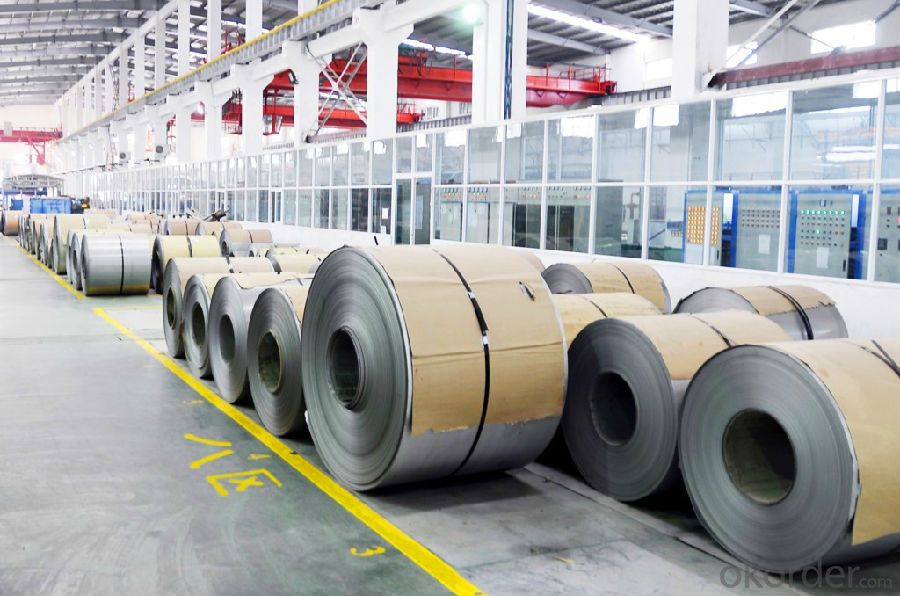
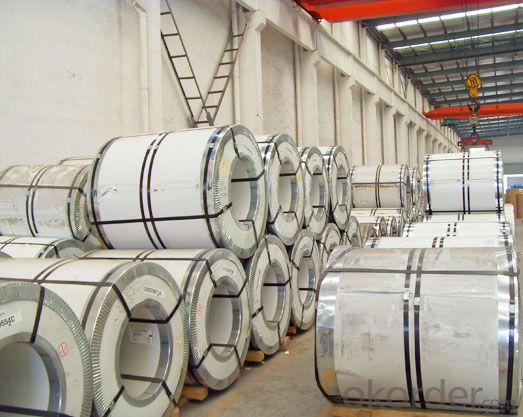
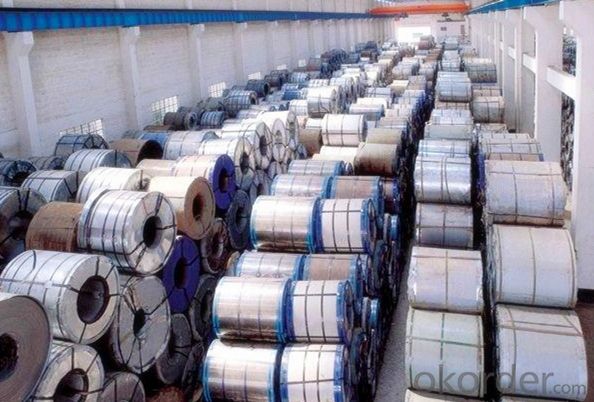
- Q: Can stainless steel strips be bent or formed into complex shapes?
- Yes, stainless steel strips can be bent or formed into complex shapes. Stainless steel is known for its excellent formability and malleability, which allows it to be easily bent, shaped, or formed without cracking or breaking. The level of complexity that can be achieved depends on the thickness and grade of the stainless steel, as well as the specific bending or forming process used. Various techniques such as cold forming, hot bending, and roll forming can be employed to achieve complex shapes with stainless steel strips, making them a versatile material for a wide range of applications in industries such as automotive, construction, and manufacturing.
- Q: Can stainless steel strips be used in the production of watches?
- Yes, stainless steel strips can be used in the production of watches. Stainless steel is a popular choice for watch cases and straps due to its durability, corrosion resistance, and aesthetic appeal. It provides a sleek and polished finish, making it suitable for both traditional and modern watch designs.
- Q: Can stainless steel strips be used in kitchenware?
- Yes, stainless steel strips can be used in kitchenware. Stainless steel is a popular choice for kitchenware due to its durability, resistance to corrosion, and ease of cleaning. Stainless steel strips can be used to make various kitchen utensils, cookware, and appliances, making them a suitable material for kitchenware applications.
- Q: How is corrosion resistance achieved in stainless steel strips?
- The ability of stainless steel strips to resist corrosion is achieved through a combination of factors inherent to their composition and structure. The main factor responsible for corrosion resistance is chromium. By adding significant amounts of chromium to the steel alloy (typically at least 10.5%), a thin oxide layer is formed on the surface of the steel. This layer acts as a barrier, preventing further corrosion and protecting the underlying steel from corrosive elements. In addition to chromium, stainless steel also contains other alloying elements like nickel, molybdenum, and nitrogen, which further enhance its corrosion resistance. These elements help stabilize the oxide layer and improve resistance to specific types of corrosion. The microstructure of stainless steel also plays a crucial role in its corrosion resistance. It can exist in different crystal structures, such as austenitic, ferritic, martensitic, and duplex. The most common type used in stainless steel strips is austenitic stainless steel, which has a face-centered cubic structure. This structure provides excellent corrosion resistance and makes stainless steel strips suitable for various applications. Moreover, stainless steel strips can undergo different surface treatments to enhance their corrosion resistance. These treatments include passivation, pickling, and electropolishing, which remove impurities, contaminants, and free iron from the surface, promoting the formation of a more robust and protective oxide layer. Overall, the combination of alloying elements, oxide layer formation, microstructure, and surface treatments contribute to the remarkable corrosion resistance of stainless steel strips. This makes them highly durable and suitable for various environments and applications where corrosion is a concern.
- Q: Are stainless steel strips resistant to nitric acid corrosion?
- In general, stainless steel strips demonstrate resistance to corrosion from nitric acid. This is because stainless steel contains a significant amount of chromium, which creates a protective layer on the surface when it comes into contact with oxygen. This layer, referred to as the passive layer, effectively shields the metal from reacting with its surroundings, including nitric acid. However, it is important to consider that the level of resistance to nitric acid corrosion can vary depending on the specific alloy and the concentration of nitric acid. In certain instances, extended exposure to high concentrations of nitric acid or elevated temperatures may lead to corrosion or pitting on the surface of stainless steel strips.
- Q: Can stainless steel strips be customized according to specific requirements?
- Yes, stainless steel strips can be customized according to specific requirements. Stainless steel is a versatile material that can be easily formed, cut, and manipulated into various shapes and sizes. This allows for customization to meet specific requirements such as width, thickness, length, and surface finish. Additionally, stainless steel strips can be further customized through processes like slitting, edge conditioning, and surface treatments to enhance their performance and appearance. Whether it's for industrial, architectural, or decorative purposes, stainless steel strips can be tailored to meet the exact specifications and demands of a particular application.
- Q: What are the common surface defects in stainless steel strips?
- Stainless steel strips may exhibit several surface defects, such as scratches, pits, and roughness. Scratches may arise from mishandling, transportation, or processing of the strips. Pits, on the other hand, manifest as tiny depressions or cavities caused by corrosion or impurities. Improper grinding, polishing, or finishing processes can lead to surface roughness. Additionally, stains, discoloration, or uneven coating may also be present as other possible defects. Thorough inspection of stainless steel strips is crucial to identify these imperfections, as they can significantly impact the material's appearance, performance, and durability.
- Q: Are stainless steel strips flexible?
- Yes, stainless steel strips can be flexible depending on their thickness and width. Thinner and narrower stainless steel strips tend to be more flexible, while thicker and wider ones may have limited flexibility.
- Q: What are the typical tolerances for stainless steel strips?
- The tolerances for stainless steel strips differ based on the application requirements and manufacturing process employed. Typically, the industry adheres to standard tolerances ranging from +/- 0.005 to 0.010 inches for thickness and +/- 0.010 to 0.020 inches for width. These tolerances guarantee that the stainless steel strips meet dimensional requirements and are suitable for automotive, aerospace, and construction industries. Notably, more precise tolerances can be attained through specialized manufacturing techniques and the use of precision equipment.
- Q: Are stainless steel strips suitable for architectural mesh applications?
- Stainless steel strips prove to be an excellent fit for architectural mesh applications. Renowned for its durability and resistance against corrosion, stainless steel emerges as the optimal choice for outdoor or heavily trafficked areas. Its remarkable strength and stability, coupled with its flexibility in design and installation, make it an ideal selection. Moreover, stainless steel mesh not only ensures security and privacy but also permits airflow and visibility. With its alluring aesthetics and practicality, stainless steel strips become the ultimate option for architectural mesh applications.
Send your message to us
Stainless Steel Coil 201 Cold Rolled Hot Rolled Coil Narrow Coil
- Loading Port:
- Lianyungang
- Payment Terms:
- TT OR LC
- Min Order Qty:
- 400 m.t.
- Supply Capability:
- 5000 m.t./month
OKorder Service Pledge
OKorder Financial Service
Similar products
Hot products
Hot Searches
Related keywords
